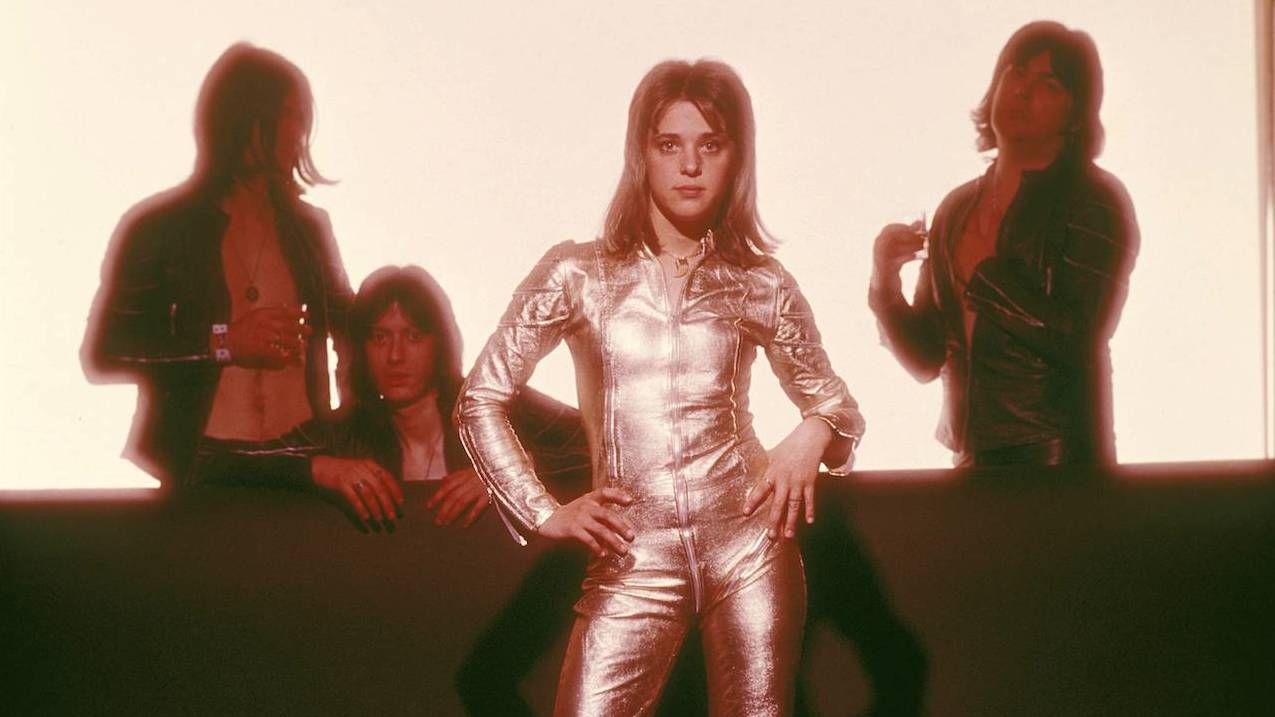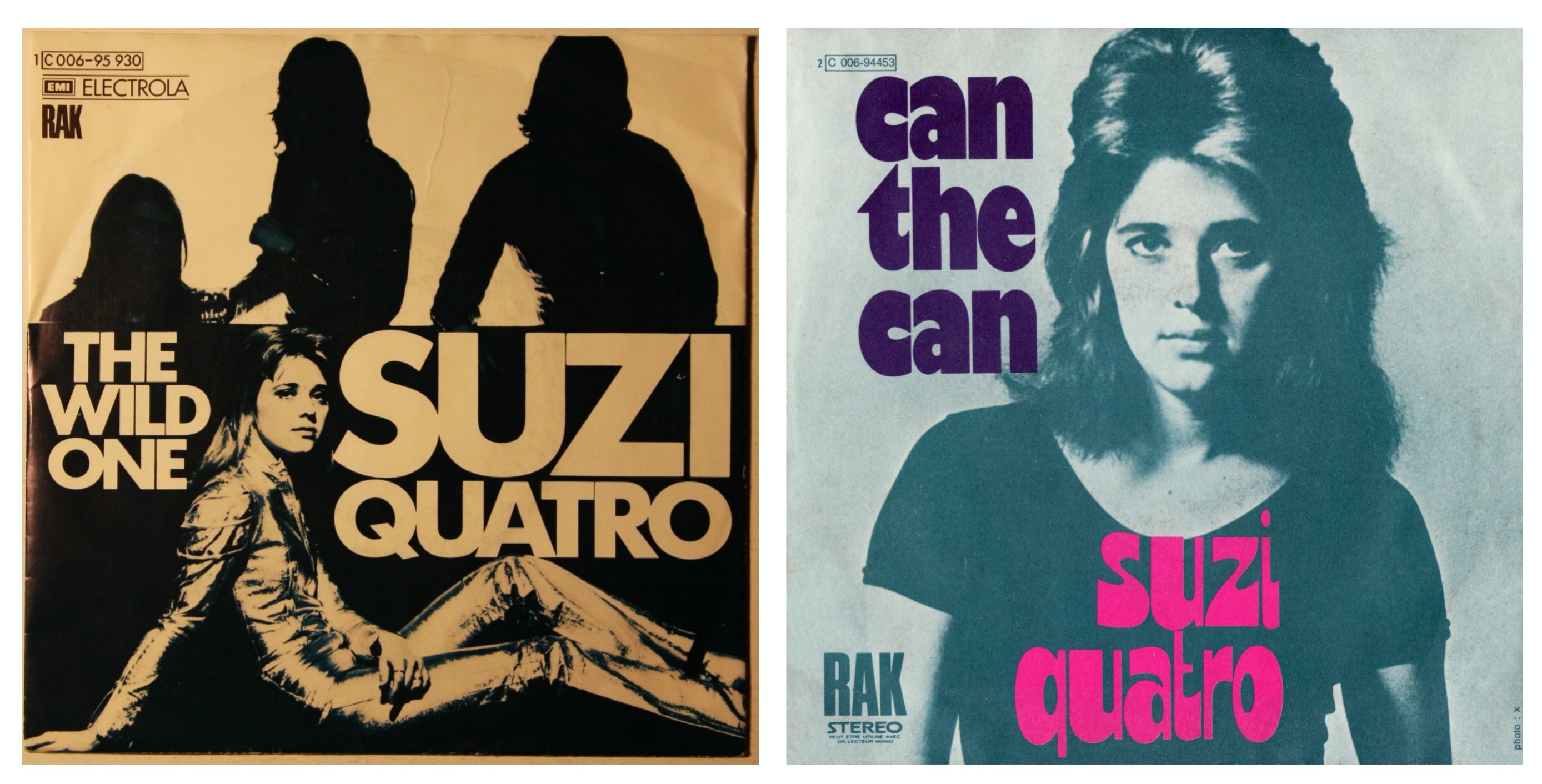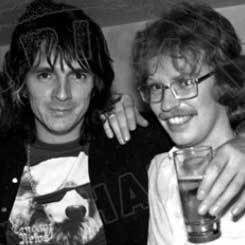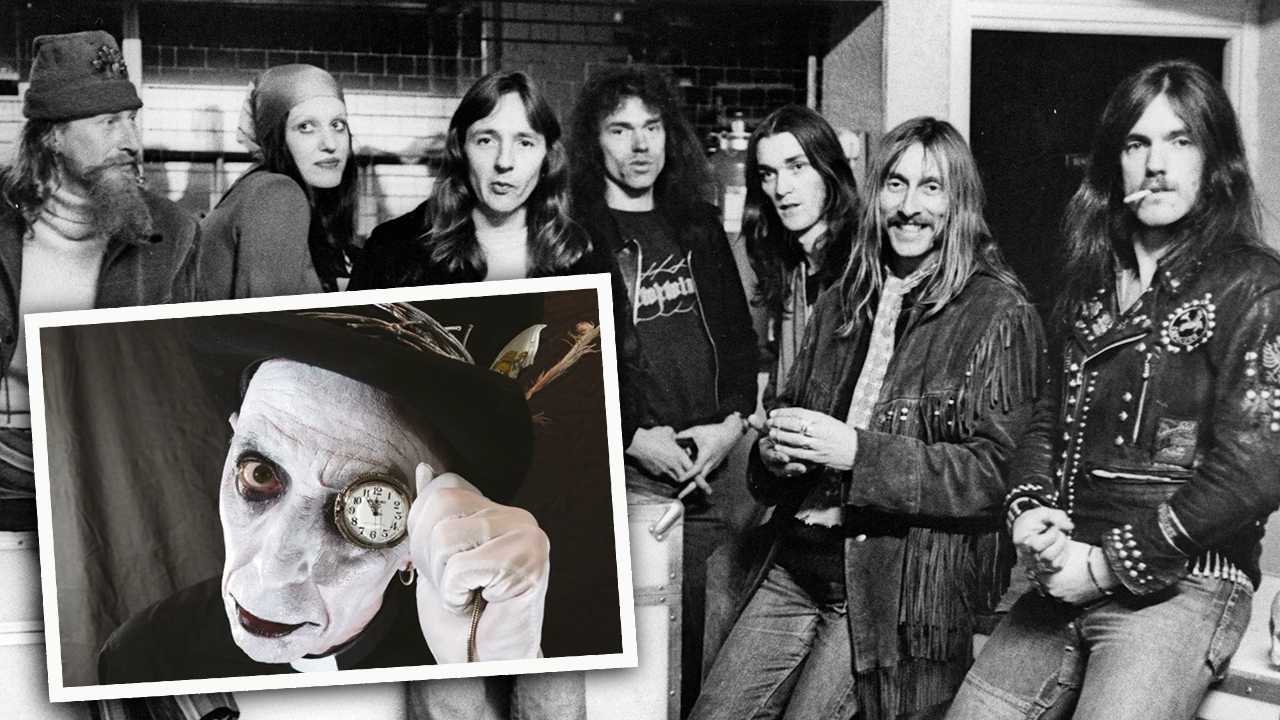Suzi Quatro: the story of rock’s original Queen Of Noise
Suzi Quatro was rock’n’roll’s golden girl who socked it to the brickies in make-up and influenced everyone from the Runaways to Courtney Love along the way

The first thing Suzi Quatro asks me to do is remove an item of clothing. Unfortunately, it’s not my shirt or my trousers or my... It’s my shoes.
“Beige carpets, y’see…” she explains.
I can’t help but notice that Quatro is wearing shoes herself. To be specific, dinky pale blue snakeskin boots coordinated to match perfectly her distressed denim attire.
“I’ve just done a photo shoot,” she justifies, raising her right boot and running a critical finger across its unsullied sole. She sounds like the brightest-eyed, bushiest-tailed 64-year-old on this or any other planet. “Look, it’s perfectly clean.”
It’s a surreal experience, standing in my socks in the foyer of a grand Elizabethan manor house, discussing dirty footwear with the pioneering Queen Of Noise. The woman who – to borrow a phrase from her autobiography – didn’t so much open the door for female rock musicians as kick it down.
If you were a budding rock fan in the 1970s, the likelihood is that Quatro’s rollicking rise to prominence is carved on your memory with the tip of a switchblade. An abrasive tomboy who oozed hell-for-leather charisma, if she was manufactured it wasn’t down Tin Pan Alley – it was down the tanning shop. Her singles were ballsy, boisterous and laced with typically 70s innuendo, especially the B-sides. Roman Fingers (‘Touch me with your Roman Fingers, love me ’til the day I die’) and Glycerine Queen (‘Takin’ pocket money, givin’ shady secrets back’) spring immediately to mind, while you certainly wouldn’t want to sprinkle Shake My Sugar on your cornflakes.
Quatro’s house, located in the Essex countryside somewhere beyond Chelmsford, has been her home for nearly 35 years. Completed w-a-a-a-y back in 1590, it boasts nine bedrooms and three reception rooms, is set in three-and-a-half acres and even has a moat. (Another lyric springs to mind, this time from The Wild One: ‘I’m a blue-eyed bitch and I wanna get rich.’)
Sign up below to get the latest from Classic Rock, plus exclusive special offers, direct to your inbox!
A long tree-lined gravel drive – wot, no devil gate? – leads past a row of dark-stained timber garages up to a turning area by the front door. An enormous black Mercedes is parked alongside a Chrysler Crossfire convertible with German number plates. A telltale sign that Rainer Haas, Quatro’s husband No.2, is paying a visit from Hamburg, where he works as a concert promoter.
We venture into the house proper. Suzi strides purposefully across the deep-pile carpet, her gait reminiscent of a catwalk model sidling up to a Wild West saloon bar to order a sarsaparilla. We pass gnarled wood-panelled walls lined with gold discs and pause to take a look into her office, which doubles up as a gallery for her collection of 750 pairs of Ray-Ban sunglasses.
“I try to wear a different set each day,” she says, “but I keep the vintage ones for special occasions, they’re kinda precious.”
Finally, we enter a plush lounge area dominated by a giant portrait of Suzi by Brazilian pop artist Romero Britto; you’ll see it on the cover of her poetry book that comes out in January. A battered 1957 Fender Precision bass guitar is bolted on the wall by the fireplace. Quatro settles on to a sofa and says in her unmistakable Michigan drawl: “Well, whaddya wanna know?”

Susan Kay Quatro was born in Detroit in 1950, the fourth of five children. Her father, Art, was Italian; her mother, Helen, was Hungarian. She showed an aptitude for music at a very young age and made her stage debut when she was just eight years old, playing bongos in her father’s jazz combo.
Suzi and her sister Patti formed a garage-rock band, the Pleasure Seekers, in 1964. Another sibling, Arlene, would soon join them. Comin’ atcha like an all-girl version of The Seeds, they rose to prominence in a frantic Motor City scene spearheaded by the likes of Alice Cooper, Ted Nugent, Bob Seger, Mitch Ryder, The Stooges and more (though Suzi’s personal Detroit idol was Bob ‘Catfish’ Hodge, guitarist and singer with local heavy-blues heroes Catfish).
With the Pleasure Seekers signing to local label Hideout and then attracting the major-league attention of Mercury Records, Suzi quit school for a life on the road. At age 17 she even found herself in Vietnam providing a tonic for US troops. In 1969 the Pleasure Seekers morphed into Cradle (minus Arlene, who stepped down to look after her children, but plus another sister, Nancy, who had joined the final Pleasure Seekers line-up).
Events took a dramatic turn two years later when Suzi met Mickie Most, the English producer and Rak Records head honcho, backstage after a Cradle gig at Detroit’s Grandee Ballroom. Her promoter brother, Mickey, had persuaded Most to check out Cradle – but he only had eyes for their diminutive bass-playing dynamo.
“Mickie took me to Motown Studios that night, along with Jeff Beck and Cozy Powell. I’ll always remember this. I picked up the bass, Jeff came in, Cozy came in, and we started to jam on Cissy Strut. Dang-de-da-de-da-dang-dang… dang-de-da-de-da-dum – you know that? I jammed on that song in the Snake Pit with Jeff Beck and Cozy Powell! How many people can say that?”
Most wanted to sign Quatro as a solo artist but Jac Holzman, head of Elektra Records, also had his beady eye on her. You might think the choice was a no-brainer. Elektra was the home of The Doors, The Eagles, The MC5 and Love. Rak, by contrast, had Mud, Kenny, Arrows and Racey.
“Ha-ha,” Quatro laughs throatily. “Yes, I had two offers. It was crazy. Jac Holzman wanted me on a solo contract and so did Mickie. Jac said: ‘Next Janis Joplin.’ But Mickie said: ‘First Suzi Quatro.’ I wasn’t gonna be the next Janis Joplin. That wasn’t who I was.”
Most wasn’t interested in Suzi’s sisters but he was reluctant to break up a family. Fortuitously, Cradle did eventually split – naturally, rather than orchestrated by Most – and Quatro found herself on a plane to London.
“My dad said to me: ‘You realise that, if you go, your sisters won’t make it without you.’ Oh… the guilt. That stayed with me for a long time. But it didn’t stop me. That was my path and I was determined to follow it. Business wise, no-brainer. Emotionally, it killed me. But I had to go.”
Quatro left the thrumming Motor City behind to land slap-bang – especially the slap – in the fledgling glitter-rock scene of London. The gentlemen’s club of stuffy rock historians will tell you that – David Bowie and Marc Bolan aside – the endearingly oafish 70s glam phenomenon was
a tawdry carbuncle on the face of British music. Wrong. It was a golden era – even if its gilt-edged appeal was more akin to a plastic bauble manufactured in Taiwan when examined closely. (Of course, I speak as someone who used to covet the window display of the cobblers on London’s Holloway Road, where Sweet used to purchase their custom-made boots.) It’s a period that the leather jumpsuited, skyscraper platformed, hollerin’-rasp-of-a-voiced Quatro will forever be associated with. Still, she’d rather distance herself from the brickies-in-eyeliner.
“I don’t know if I ever was part of the glam scene,” she says. “I have a big bone of contention with that. I might’ve been part of the era but I wasn’t part of the look. I didn’t have any make-up on; the guys were in make-up. I see myself as rock’n’roll, never glam. If you look at me, I’m very Detroit. Plain black leather and plenty of attitude.”
It took a while for Quatro to find her feet in England. Mickie Most might’ve spotted her nascent talent but, when push came to shove, he didn’t know exactly what to do with her. It took two years to get her career on track. She went into the studio with Big Jim Sullivan on guitar, Yes drummer Alan White and Free keyboard player ‘Rabbit’ Bundrick and kept on recording. “We were searching,” she admits. “I couldn’t find my feet and it finally only made sense when I said: ‘I need a band.’”
But Most was right about one thing. Suzi Quatro wasn’t simply about supplying eye candy for the gawky teenage boys of the 1970s, with their frizzy Please Sir! hair, elephant-ear shirt collars, 99p loon pants and plastic stackheels from Timpsons.
“Mickie said to me right from the start: ‘You’re a rocker, you’re androgynous, you’re gonna appeal to straight, gay, male, female, across the board.’ But he didn’t know what to do with me in the studio. He could never produce me.”
In late 1972, Quatro went on a tour of British theatres, the opening act on a mouth-watering three-band bill featuring Thin Lizzy and headliners Slade. She won over Slade’s notoriously partisan crowd and hung out with Phil Lynott. “We stayed at Phil’s mother’s hotel when we were in that neck of the woods. He was a nice, gentle man despite his drug problems.”
By this time, her band featured Len Tuckey, a giant of a guitarist. The pair became lovers during the Slade tour, and Tuckey would later become Quatro’s first husband. Did they try to sweep their burgeoning romance under the carpet, for fear of upsetting fans?
“I never hid that. No, no, no,” she replies instantly. “I think Mickie didn’t want us to get married right away. But we were living together right from day one, about two weeks into the tour. We fell in love and that was that. I was with him for twenty years.”
The crucial turning point in Suzi’s career came in early 1973. Songwriter/producer Mike Chapman happened to be sitting in the Rak Records reception area when she walked by.
“Mike said: ‘Who’s that cute girl there?’ And Mickie said: ‘That’s my secret weapon, she’s gonna be a huge star,’” she remembers. “Mickie played Mike Rolling Stone, which was my first single for Rak, a low-key kinda song. Mike said: ‘That’s a surprise, I thought she was going to be really ballsy, that’s what she looks like.’ And that was a lightbulb moment for Mickie.”
Chapman and his songwriting partner Nicky Chinn came up with the song Can The Can for Quatro. Feral, rampant and infinitely commercial, it reached No.1 in the UK in June 1973. The Quatro band snaffled an appearance on Top Of The Pops and, come Thursday, a nation stood back in wonderment. This wasn’t a simpering Dana performing All Kinds Of Everything; it wasn’t Lynsey de Paul with her carefully sculpted barnet and generous acres of lipstick. (De Paul famously called Quatro “a dyke” in a Record Mirror interview; she now says she was misquoted and used “butch” instead. No one knows for sure; Record Mirror mysteriously erased the tape.) No – this was a snarling Daytona Demon clad head-to-toe in rawhide, kicking sand in your face. And then rubbing it gleefully into your forehead.
“I didn’t even know the jumpsuit was going to be sexy,” Suzi says. “Mickie said to me: ‘I don’t want you to go there and just do the song, go there and kill them.’ And y’know what? I did.”
Has the sordid Jimmy Savile affair ruined the cachet of those early TOTP clips? “Whatever he did was nothing to do with what the show was all about,” she fires back. “That’s somebody’s private life. That’s nothing to do with era, that’s to do with the man. Let us have our memories, y’know?”
Quatro’s purple patch continued: 48 Crash, Devil Gate Drive (another No.1), The Wild One, Your Momma Won’t Like Me… While Suzi blazed a trail for female rock’n’rollers there wasn’t, initially at least, an explosion of likeminded musicians. The real game-changer came in 1975 when The Runaways formed. They had a rough’n’ready Suzi-alike in Joan Jett but they also had a solid-gold guitar heroine in Lita Ford and a provocative frontgal in Cherie Currie.
“I’ve known Joan Jett forever. For about two years, every time I played in LA, she was at the hotel, in the lobby, with the jacket and the haircut. I’d go: ‘There she is again.’ Later on, when Joan went solo, my friends called me up when I Love Rock’N’Roll was on Top Of The Pops. They said: ‘Hey, you’ve got another hit.’ And I had to say: ‘No, that’s not me…’”
While Suzi welcomed The Runaways’ arrival she was all too aware that the behind-the-scenes machinations were entirely different. “Mickie Most was a protector and [Runaways svengali] Kim Fowley was a different thing altogether. Let’s just say Fowley was not [a protector]. End of story.”
In early 1974, Quatro returned to the USA for a string of headline dates, including a hometown gig in Detroit with a fledgling Kiss supporting.
“It was very early on in Kiss’s career. I saw these guys going around in their make-up and I went: ‘Jesus Christ almighty, what is this?’ You wanna talk glam? Well, there you go.”
It got bigger and better. The following year the Quatro band supported Alice Cooper on his Welcome To My Nightmare tour in the States. The two acts didn’t conflict. Alice had his theatrical thing; Suzi was just straightforward rock’n’roll.
“That was the right title for that tour, it went on forever. All of us in a little turbo-prop plane, city to city, sometimes two flights a day. A lot of the people I grew up with were on the tour – [Cooper guitarists] Dick Wagner and Steve Hunter, lots of people from Detroit. We had a good time, a lot of blackjack, a lot of good gigs.”
Suzi Quatro took stock of her life after the Alice tour and slowly but surely a mellower, more well-rounded person would begin to emerge. It would be wrong to say that the punk-rock revolution knocked the stuffing out of her; she continued to have hits while Babylon burned, albeit in the lower reaches of the Top 30. But as she says in her autobiography, Unzipped: “I was beginning to feel trapped in my image and wanted to spread my creative wings… Mickie Most was having a hard time thinking of me in any other way than the ‘little girl from Detroit’.”
In 1978, Quatro played Most her gentle ballad You Can’t Give Me Love. Halfway through, he took it off. “This is what a hit record sounds like,” he told her and played her Hot Chocolate’s Heaven’s In The Back Seat Of My Cadillac instead. Quatro’s song reached No.4 in the chart; Hot Chocolate’s made it to No.25. One-nil to soft-focus Suzi.
The same year, she duetted with Smokie’s Chris Norman on the countrified Stumblin’ In. She bagged the part of Leather Tuscadero in Happy Days; her appearances gave a boost to show’s ratings – as well as Henry’s Winkler (Ouch! – Ed). She guested on Minder and Dempsey & Makepeace. In 1986, she appeared as Annie Oakley in a London production of Annie Get Your Gun. Her career diversified dramatically and it’s not something she regrets.
“I always had in my gameplan to do everything in the entertainment profession that I felt I could be good at. Rock’n’roll was my main thing, my security, and I couldn’t do without it. But I also wanted to act, do radio, do much more.”
I remember clearly pining for the her kick-ass hellion image as she broadened her horizons. But as her often-schizophrenic autobiography proves, Suzi Quatro is just a single aspect of a multi-faceted personality. Could she have based an entire career on her in-your-face Can The Can persona? Of course not. “The truth is that in every success story something or somebody is left behind,” Suzi says.
The 2014 box set, The Girl From Detroit City, covered Quatro’s entire career, while Australian dates in early 2016 were billed as her final tour. Does this mean she’s winding down her career?
“I’m not done,” she says. “ I’m taking it as it comes; I’m happy to celebrate my fiftieth year in the business. After that, anything’s a bonus.”
Not for the first time she glances over her shoulder in the direction of the old Fender Precision by the fireplace. “I keep looking at it because it’s my original bass, the one my dad gave me when I was fourteen,” she says. “All my other sisters had shit little crappy copies to play and… [whispers] I had that. So don’t tell me it wasn’t written in the stars.”
The Girl From Detroit City box set is available via Cherry Red.
Ten surprising Suzi Quatro songs
Slade: the British rockers who inspired Kiss and the Ramones
Geoff Barton is a British journalist who founded the heavy metal magazine Kerrang! and was an editor of Sounds music magazine. He specialised in covering rock music and helped popularise the new wave of British heavy metal (NWOBHM) after using the term for the first time (after editor Alan Lewis coined it) in the May 1979 issue of Sounds.

